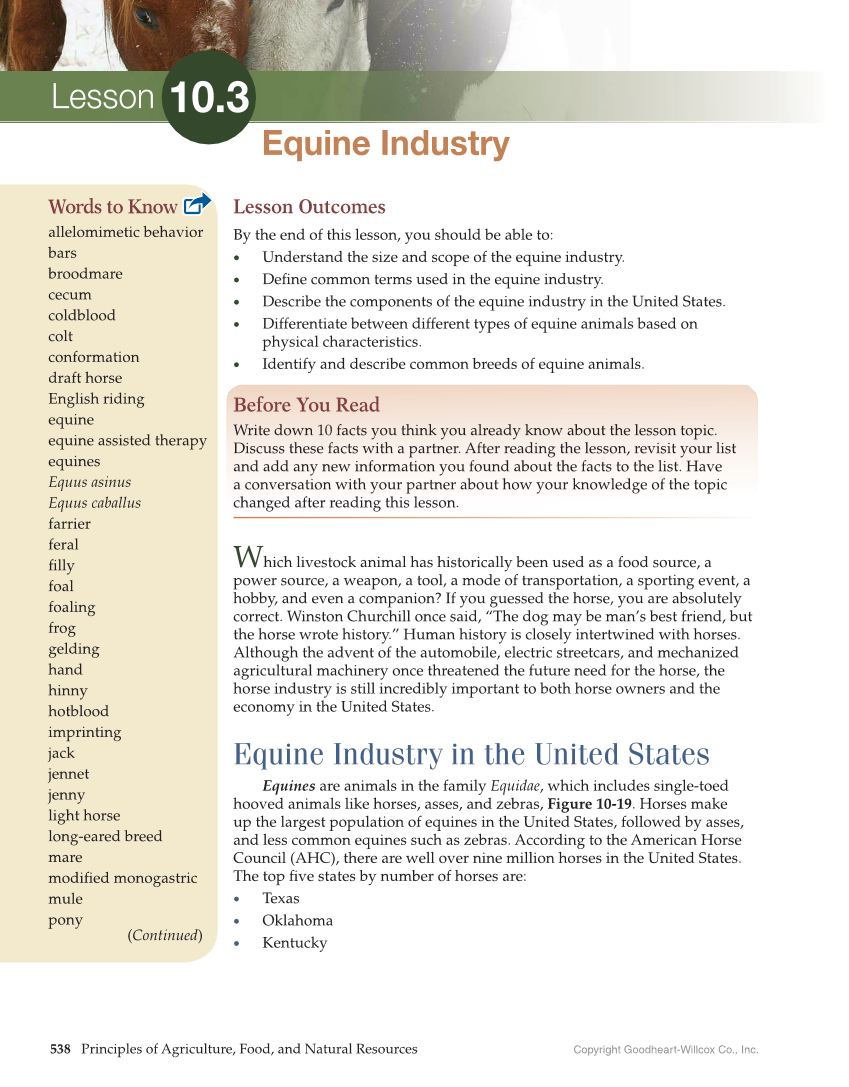Copyright Goodheart-Willcox Co., Inc. 538 Principles of Agriculture, Food, and Natural Resources Words to Know allelomimetic behavior bars broodmare cecum coldblood colt conformation draft horse English riding equine equine assisted therapy equines Equus asinus Equus caballus farrier feral filly foal foaling frog gelding hand hinny hotblood imprinting jack jennet jenny light horse long-eared breed mare modified monogastric mule pony Equine Industry 10.3 Lesson Outcomes By the end of this lesson, you should be able to: „ Understand the size and scope of the equine industry. „ Define common terms used in the equine industry. „ Describe the components of the equine industry in the United States. „ Differentiate between different types of equine animals based on physical characteristics. „ Identify and describe common breeds of equine animals. Before You Read Write down 10 facts you think you already know about the lesson topic. Discuss these facts with a partner. After reading the lesson, revisit your list and add any new information you found about the facts to the list. Have a conversation with your partner about how your knowledge of the topic changed after reading this lesson. Which livestock animal has historically been used as a food source, a power source, a weapon, a tool, a mode of transportation, a sporting event, a hobby, and even a companion? If you guessed the horse, you are absolutely correct. Winston Churchill once said, “The dog may be man’s best friend, but the horse wrote history.” Human history is closely intertwined with horses. Although the advent of the automobile, electric streetcars, and mechanized agricultural machinery once threatened the future need for the horse, the horse industry is still incredibly important to both horse owners and the economy in the United States. Equine Industry in the United States Equines are animals in the family Equidae, which includes single-toed hooved animals like horses, asses, and zebras, Figure 10-19. Horses make up the largest population of equines in the United States, followed by asses, and less common equines such as zebras. According to the American Horse Council (AHC), there are well over nine million horses in the United States. The top five states by number of horses are: „ Texas „ Oklahoma „ Kentucky Lesson (Continued)
